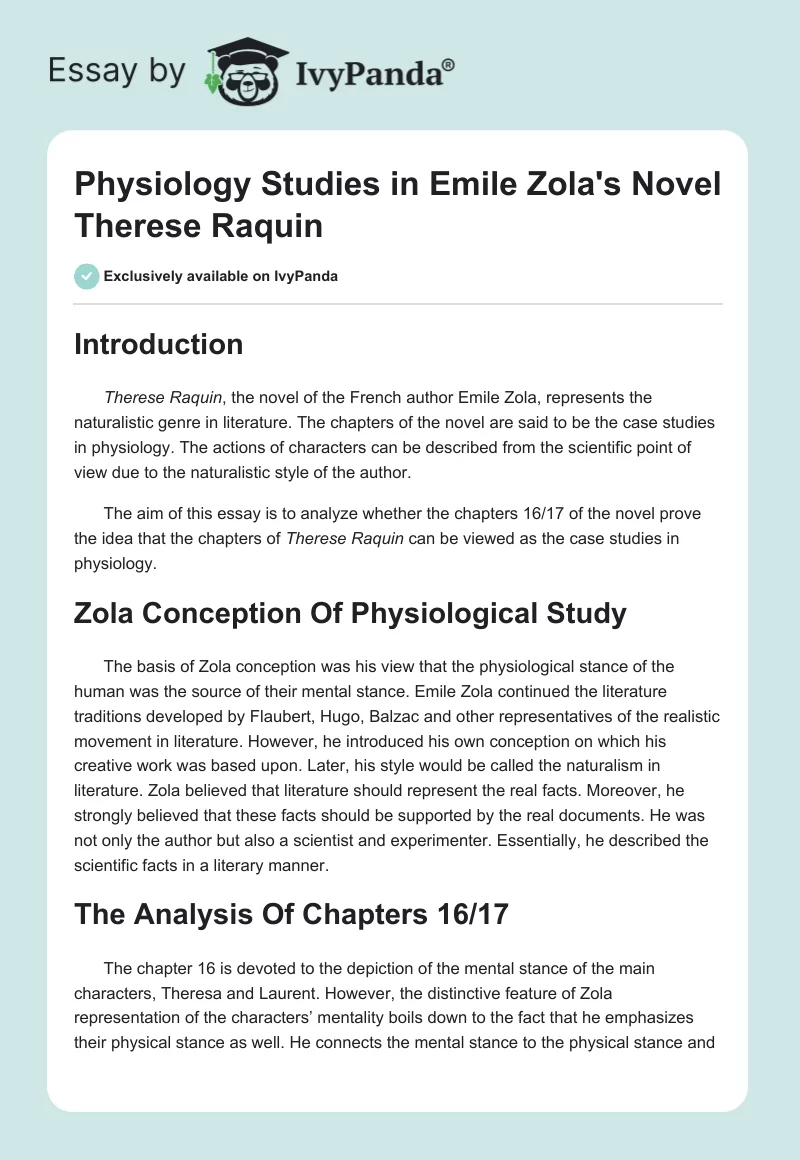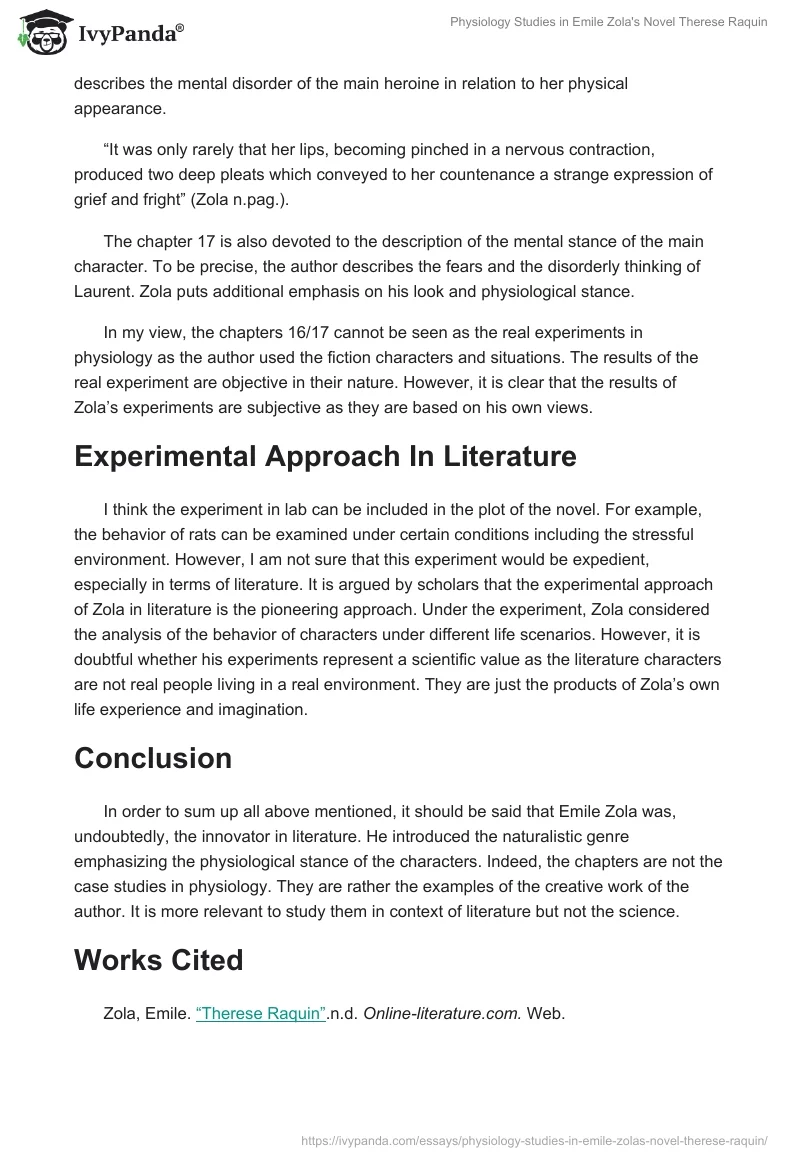Introduction
Therese Raquin, the novel of the French author Emile Zola, represents the naturalistic genre in literature. The chapters of the novel are said to be the case studies in physiology. The actions of characters can be described from the scientific point of view due to the naturalistic style of the author.
The aim of this essay is to analyze whether the chapters 16/17 of the novel prove the idea that the chapters of Therese Raquin can be viewed as the case studies in physiology.
Zola Conception Of Physiological Study
The basis of Zola conception was his view that the physiological stance of the human was the source of their mental stance. Emile Zola continued the literature traditions developed by Flaubert, Hugo, Balzac and other representatives of the realistic movement in literature. However, he introduced his own conception on which his creative work was based upon. Later, his style would be called the naturalism in literature. Zola believed that literature should represent the real facts. Moreover, he strongly believed that these facts should be supported by the real documents. He was not only the author but also a scientist and experimenter. Essentially, he described the scientific facts in a literary manner.
The Analysis Of Chapters 16/17
The chapter 16 is devoted to the depiction of the mental stance of the main characters, Theresa and Laurent. However, the distinctive feature of Zola representation of the characters’ mentality boils down to the fact that he emphasizes their physical stance as well. He connects the mental stance to the physical stance and describes the mental disorder of the main heroine in relation to her physical appearance.
“It was only rarely that her lips, becoming pinched in a nervous contraction, produced two deep pleats which conveyed to her countenance a strange expression of grief and fright” (Zola n.pag.).
The chapter 17 is also devoted to the description of the mental stance of the main character. To be precise, the author describes the fears and the disorderly thinking of Laurent. Zola puts additional emphasis on his look and physiological stance.
In my view, the chapters 16/17 cannot be seen as the real experiments in physiology as the author used the fiction characters and situations. The results of the real experiment are objective in their nature. However, it is clear that the results of Zola’s experiments are subjective as they are based on his own views.
Experimental Approach In Literature
I think the experiment in lab can be included in the plot of the novel. For example, the behavior of rats can be examined under certain conditions including the stressful environment. However, I am not sure that this experiment would be expedient, especially in terms of literature. It is argued by scholars that the experimental approach of Zola in literature is the pioneering approach. Under the experiment, Zola considered the analysis of the behavior of characters under different life scenarios. However, it is doubtful whether his experiments represent a scientific value as the literature characters are not real people living in a real environment. They are just the products of Zola’s own life experience and imagination.
Conclusion
In order to sum up all above mentioned, it should be said that Emile Zola was, undoubtedly, the innovator in literature. He introduced the naturalistic genre emphasizing the physiological stance of the characters. Indeed, the chapters are not the case studies in physiology. They are rather the examples of the creative work of the author. It is more relevant to study them in context of literature but not the science.
Works Cited
Zola, Emile. “Therese Raquin”.n.d. Online-literature. Web.


